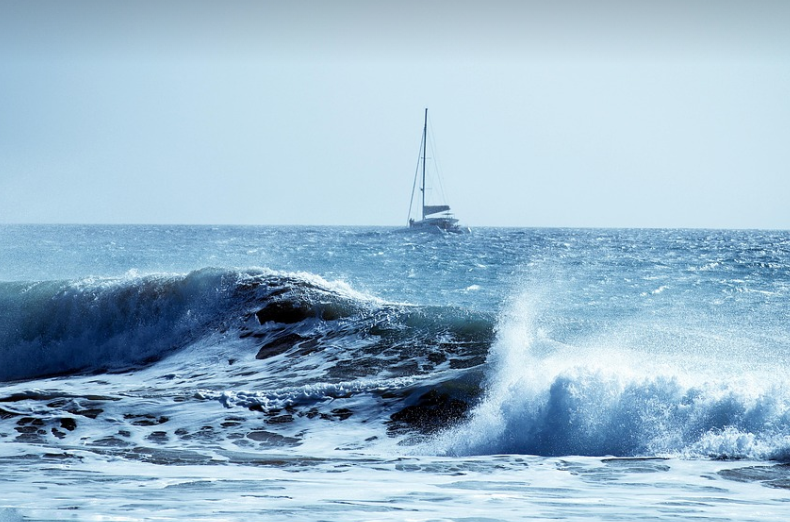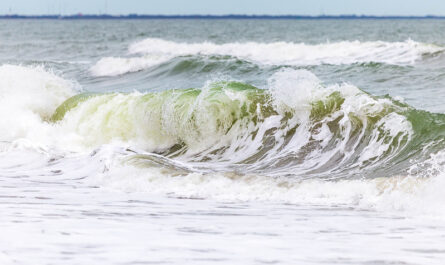Beneath the rolling waves of the Atlantic Ocean lies a realm largely unexplored by humans: the deep‑sea ecosystem. Ranging from the edge of the continental shelf at roughly 200 meters depth to the abyssal plains plunging beyond 6,000 meters, this dark, high‑pressure environment hosts a remarkable diversity of life. Far from barren, the deep Atlantic supports unique communities—hydrothermal‑vent organisms, cold‑water corals, bioluminescent fishes, and microbial mats—that underpin global biogeochemical cycles and hold untold scientific promise. Yet these ecosystems face mounting threats from deep‑sea mining, bottom trawling, climate change, and pollution. Understanding and safeguarding this unseen world is essential not only for marine conservation but for the health of the entire planet.
1. The Hidden Diversity of the Deep Atlantic
1.1 Hydrothermal‑Vent Communities
At mid‑ocean ridges such as the Mid‑Atlantic Ridge, volcanic activity drives seawater through fissures in the ocean floor, where it emerges as superheated, mineral‑rich plumes. These hydrothermal vents—first discovered in 1977—host dense aggregations of organisms entirely independent of sunlight. Giant tube worms (Riftia pachyptila), vent mussels, vent crabs, and specialized bacteria form symbiotic relationships: bacteria oxidize hydrogen sulfide from the vent fluids to produce organic carbon, nourishing higher trophic levels. These “chemosynthetic” ecosystems have adapted to extreme temperatures (up to 400 °C) and heavy metal concentrations, offering insights into life’s resilience and the possibility of analogous life on other planetary bodies.
1.2 Cold‑Water Coral Reefs and Sponge Grounds
Beyond hydrothermal vents, the deep Atlantic harbors extensive cold‑water coral reefs, primarily composed of species such as Lophelia pertusa and Madrepora oculata. Unlike tropical corals, these reefs thrive in near‑freezing temperatures and complete darkness, relying on detrital “marine snow” and plankton for nourishment. Cold‑water coral reefs provide structural complexity—overhangs, crevices, and pinnacles—that supports rich assemblages of fish, crustaceans, and mollusks. Similarly, deep sponge grounds—communities dominated by glass sponges—filter vast volumes of water, cycling nutrients and offering habitat for juvenile fish and invertebrates. These sessile ecosystems can be centuries to millennia old, acting as living archives of oceanographic history.
1.3 Abyssal Plains and Seamount Fauna
The vast abyssal plains of the Atlantic, covering nearly half the ocean floor, were once thought barren. However, deep‑sea expeditions have revealed surprising biodiversity: sea cucumbers, brittle stars, amphipods, and even fish adapted to life in near‑zero light. Seamounts—underwater mountains rising from the abyss—function as oases, enhancing local productivity via upwelling currents that deliver nutrients. Unique species such as the stubby squid (Rossia glaucopis) and the bristle‑worm genus Osedax (bone‑eating worms) exemplify the evolutionary novelty found on seamounts and whale‑fall habitats.
2. Ecological and Biogeochemical Roles
2.1 Carbon Sequestration and the Biological Pump
Deep‑sea ecosystems play a pivotal role in the ocean’s “biological pump,” the process by which carbon fixed by surface phytoplankton is transported to the ocean interior and seafloor. When plankton die or are consumed, their remains sink, delivering organic carbon to depth. Benthic organisms—detritivores such as polychaete worms and deep‑sea fishes—recycle nutrients, while some carbon is buried in sediments for geological timescales. Cold‑water corals and sponges also sequester carbon within their calcium carbonate skeletons. Disruption of these communities could weaken the biological pump, reducing the ocean’s capacity to absorb atmospheric CO₂ and exacerbating climate change.
2.2 Nutrient Cycling and Habitat Connectivity
Deep‑sea microbes and invertebrates drive key nutrient cycles—nitrogen, sulfur, phosphorus—through processes such as nitrification, denitrification, and sulfate reduction. Hydrothermal vents, for example, supply iron and other trace metals that fuel primary production at the surface when vent plumes disperse. Seamounts and coral reefs serve as stepping stones for migratory species—tuna, sharks, sea turtles—linking coastal, pelagic, and deep‑sea realms. The loss of deep habitats can thus reverberate through the entire marine food web, affecting commercially important fisheries and ecosystem resilience.
3. Scientific and Biomedical Potential
3.1 Novel Biochemical Pathways
Deep‑sea organisms have evolved unique enzymes and metabolic pathways to survive extreme conditions—high pressure, low temperature, and chemical toxicity. Extremophilic bacteria from hydrothermal vents produce thermostable enzymes (e.g., DNA polymerases) that revolutionized molecular biology. Cold‑adapted enzymes from abyssal microbes hold promise for industrial processes at low temperatures, reducing energy consumption. The study of bioluminescent mechanisms in deep‑sea fishes and jellyfish has led to fluorescent markers indispensable in biomedical imaging and genetic research.
3.2 Drug Discovery and Biotechnology
Marine natural products derived from deep‑sea sponges, corals, and bacteria exhibit potent antibacterial, antiviral, and anticancer properties. Compounds such as manoalide and sarcodictyins, isolated from deep sponges, have shown efficacy against inflammation and tumor cell proliferation. The genomic exploration of deep‑sea microbiomes continues to unveil biosynthetic gene clusters encoding novel secondary metabolites. Protecting these ecosystems ensures continued access to this invaluable biochemical library.
4. Threats to Atlantic Deep‑Sea Ecosystems
4.1 Deep‑Sea Mining
The growing demand for critical minerals—cobalt, nickel, copper, rare earth elements—drives interest in mining polymetallic nodules, cobalt crusts on seamounts, and massive sulfide deposits at hydrothermal vents. Mining operations involve mechanical removal of substrate, generating sediment plumes that can smother filter‑feeding communities kilometers away. Experimental studies predict that biodiversity losses could persist for decades or longer, with uncertain rates of natural recovery. The International Seabed Authority is tasked with regulating mining, but current guidelines may be insufficient to prevent irreversible harm.
4.2 Bottom Trawling and Fishing Impacts
Although most industrial fishing occurs in continental shelf waters, bottom‑trawling vessels sometimes operate at depths exceeding 1,000 meters, dragging heavy nets that crush coral reefs and sponge grounds. Recovery of these slow‑growing organisms can take centuries; in some cases, habitats destroyed by a single trawling event remain barren for human timescales. Bycatch of deep‑sea species—often with low reproductive rates—can drive local extinctions and undermine fisheries sustainability.
4.3 Climate Change and Ocean Acidification
Rising ocean temperatures alter deep‑sea currents and stratification, potentially disrupting nutrient delivery to benthic communities. Warming may also shift the distribution of species adapted to stable cold conditions, with unknown ecological consequences. Additionally, increasing atmospheric CO₂ dissolves into the ocean, lowering pH and reducing carbonate ion availability. Cold‑water corals and pteropods are particularly vulnerable, as their calcium carbonate skeletons and shells become more soluble under acidified conditions. The deep Atlantic’s buffering capacity is limited; acidification effects may manifest more rapidly at depth than previously assumed.
4.4 Pollution and Plastic Ingestion
Microplastics and persistent organic pollutants (POPs) sink into the deep sea, where filter feeders and detritivores ingest them. Studies have detected microplastic fibers in abyssal sediments and in the guts of deep‑sea amphipods. Chemical contaminants can bioaccumulate and biomagnify through deep‑sea food webs, posing risks to both wildlife and, indirectly, human consumers of deep‑sea fisheries. Noise pollution from seismic surveys and shipping traffic can also disrupt deep‑sea mammal and fish behavior.
5. Strategies for Preservation and Sustainable Management
5.1 Establishing Deep‑Sea Marine Protected Areas (MPAs)
Designating MPAs in the deep Atlantic can safeguard key habitats—hydrothermal vents, cold‑water coral reefs, seamount chains. Effective MPAs require no‑take zones, strict regulation of adjacent activities, and enforcement via satellite monitoring and vessel tracking. International cooperation is vital, as many deep‑sea features lie beyond national jurisdictions. The UN Decade of Ocean Science (2021–2030) emphasizes MPA networks that represent all ocean ecosystems, including the deep sea.
5.2 Precautionary Approach to Deep‑Sea Mining
Before large‑scale extraction begins, rigorous environmental impact assessments (EIAs) must be mandated, including baseline biodiversity surveys and long‑term monitoring. Mining companies should be required to post financial bonds to fund habitat restoration and compensate for ecological damages. Investment in mining technology that minimizes sediment plumes and substrate removal could reduce impacts, but the precautionary principle suggests that mining should proceed only where clear evidence indicates negligible harm.
5.3 Sustainable Fishing Practices
Banning or strictly limiting bottom trawling below certain depths (e.g., 800 meters) can protect vulnerable benthic communities. Transitioning to mid‑water trawls or longlines reduces habitat damage. Gear modifications—such as turtle‑excluder devices and bycatch reduction devices—can lower non‑target mortality. Fisheries management must incorporate deep‑sea species’ life‑history traits, setting conservative catch limits and rebuilding depleted stocks.
5.4 Climate Action and Pollution Control
Mitigating climate change through rapid decarbonization will benefit deep‑sea ecosystems by stabilizing ocean temperatures and pH. Reducing plastic production and improving waste management on land curbs microplastic inputs to the ocean. Stricter regulations on chemical pollutants—polychlorinated biphenyls (PCBs), persistent pesticides—can limit deep‑sea contamination. Investing in quieter ship designs and restricting seismic surveying in sensitive areas helps minimize acoustic disturbance.
5.5 Advancing Scientific Research and Public Awareness
Deep‑sea exploration remains costly, but initiatives such as remotely operated vehicles (ROVs), autonomous underwater vehicles (AUVs), and deep‑sea observatories are expanding knowledge. International data sharing platforms and open‑access publications democratize research findings. Public outreach—through documentaries, museum exhibits, and citizen‑science programs—can foster appreciation for the deep sea’s wonder and the urgency of its conservation.
6. The Ethical Imperative and Future Outlook
The deep Atlantic embodies both scientific frontier and moral responsibility. It harbors evolutionary marvels—life forms thriving without sunlight, ecosystems cycling Earth’s fundamental elements—that challenge our understanding of biology and Earth systems. Preserving this unseen world aligns with ethical stewardship of the planet, honoring the intrinsic value of non‑human life and the rights of future generations to inherit a biodiverse ocean.
As technological advances enable deeper access, humanity stands at a crossroads: to exploit the deep sea’s resources with scant regard for ecological limits or to adopt a precautionary, conservation‑centered ethos. By implementing robust protections, supporting sustainable industries, and deepening scientific inquiry, we can ensure that the Atlantic’s hidden depths continue to sustain life, inspire discovery, and regulate the global climate for centuries to come.



